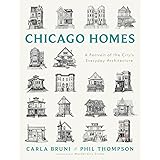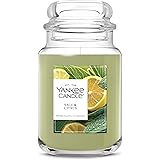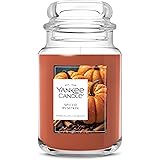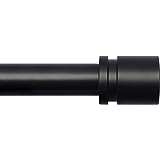The video above highlights crucial kitchen design mistakes many homeowners unknowingly make. These common errors can quickly turn a dream kitchen into a frustrating space. Fortunately, simple solutions are available for enhancing both aesthetics and functionality. By addressing these key areas, a more practical and visually appealing kitchen environment can be created. This article expands on the video’s valuable advice, offering deeper insights into intelligent kitchen renovation choices.
Smart Kitchen Lighting: Beyond Tiny Pendants
Often, a kitchen’s ambiance is significantly impacted by its lighting. The video correctly points out the issue with using many small pendants. Instead, one or two larger statement pieces are advised. Smaller pendants tend to create visual clutter above a kitchen island. They also might not provide sufficient illumination for the entire workspace. An oversized pendant, conversely, becomes a focal point. Its scale offers a sense of grandeur and purpose to the island area. This choice makes a bolder design statement.
Choosing the right size is paramount for oversized pendant lights. A good rule of thumb considers the island’s length and the ceiling height. Pendants should hang approximately 30-36 inches above the countertop. If the island measures six feet or more, two substantial pendants could be perfect. For smaller islands, a single, impressive fixture often suffices. Materials like brushed brass, matte black, or clear glass are popular choices. These options can complement various kitchen design styles. Ultimately, the goal is balanced light and strong visual presence.
Selecting Statement Pendant Lights for Your Kitchen Island
The visual impact of pendant lights cannot be overstated. When selecting statement pendant lights, their style should align with the overall kitchen layout. For instance, a minimalist kitchen might benefit from sleek, geometric designs. A more traditional space could be enhanced by ornate or industrial-style fixtures. Consideration should also be given to the light source itself. Dimmable LEDs are highly recommended. They offer versatile lighting options from task-specific brightness to ambient glow. Properly chosen lighting dramatically improves a kitchen’s usability. It also elevates its aesthetic appeal significantly.
Practical Kitchen Hardware: Avoiding Snags and Frustration
Impractical hardware can be a major source of annoyance in a busy kitchen. The video specifically warns against T-shaped knobs. These are notorious for snagging clothing as people move about. While trendy, their functional drawbacks are substantial. Kitchens are high-traffic zones, and ease of movement is critical. Snagging incidents can cause inconvenience or even minor accidents. Thoughtful selection of hardware is thus crucial for any kitchen renovation.
There are numerous ergonomic alternatives to frustrating hardware. Pull handles offer a much better grip and reduce snagging risks. Cup pulls, with their recessed design, are another excellent option. These are especially popular in farmhouse or Shaker-style kitchens. They provide a comfortable hold without protruding excessively. Furthermore, recessed pulls or finger pulls integrate seamlessly into cabinetry. This creates a sleek, modern look. Smooth, rounded edges on any chosen hardware are always a plus. They prevent accidental bumps or scrapes. Functionality should always be prioritized over fleeting trends.
Upgrading Kitchen Cabinet Knobs and Pulls
Upgrading kitchen cabinet knobs and pulls is a relatively easy fix. This is true even for renters, as the video notes. Always keep the original hardware in a safe place. This allows for easy reinstallation when moving out. For homeowners, new hardware offers an instant refresh. It can dramatically change the look of existing cabinetry. Consider the material and finish of the hardware. Stainless steel, brushed nickel, and polished chrome are durable options. They also offer timeless appeal. A consistent style throughout the kitchen is generally preferred. This contributes to a cohesive and polished kitchen design. Small details like hardware make a big difference.
Optimizing Storage: Drawers Over Lower Cabinets
Effective storage is a cornerstone of a functional kitchen. The video advocates for drawers over traditional lower cabinets. This recommendation is particularly valid for base units. Reaching items at the back of a deep cabinet often involves kneeling and rummaging. This leads to frustration and wasted time. Drawers, conversely, bring the contents out to you. Everything becomes visible and easily accessible. This greatly improves kitchen ergonomics and efficiency. It is a smart investment during a kitchen renovation.
The benefits of drawers extend beyond mere access. They allow for superior organization of kitchen essentials. Deep drawers can house pots, pans, and even small appliances. Specialized inserts can further compartmentalize items. Cutlery, utensils, and spices can be neatly arranged. Pantry drawers are also gaining popularity. They offer an accessible way to store dry goods. Items are less likely to be forgotten at the back of a drawer. This reduces food waste and improves inventory management. Drawers transform chaotic spaces into orderly systems.
Designing for Maximum Efficiency with Kitchen Drawers
When planning a kitchen layout, maximizing efficiency with drawers is key. Consider the height and width of drawers to suit specific storage needs. Wider drawers are ideal for larger cookware. Shallower drawers are perfect for dishes or baking sheets. Soft-close mechanisms are a worthwhile addition. They prevent slamming and protect contents. Furthermore, full-extension glides ensure the entire drawer pulls out completely. This maximizes the usable space inside. Investing in high-quality drawer systems pays off daily. They make cooking and cleaning much more enjoyable. This avoids common kitchen design mistakes in storage.











